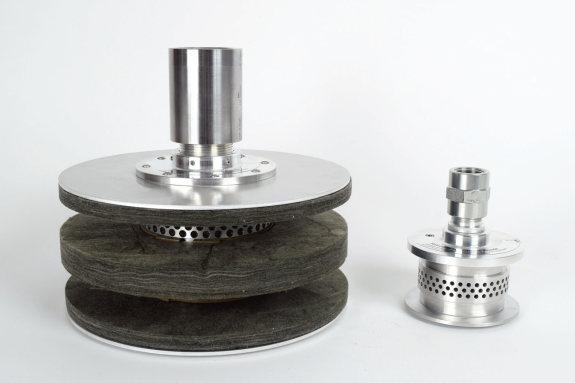
2 minute read
Fire protection in the Middle East
Fire protection
in the Middle East
Johnson Controls provides an in-depth analysis of fire safety solutions and explores the Middle East market in detail.
Javier Moyano, business development manager, Middle East & Africa at Johnson Controls
ABOVE: SAPPHIRE Acoustic 0.75 and 1.5 nozzles from Johnson Controls. Covid-19 has caused a contraction in the global fire safety equipment market as industries dealt with faltering cash flows as well a large proportion of workers unable to enter the workplace due to restrictions. As the world emerges from the pandemic, this market is set to rebound firmly due to the continued growing awareness of the importance of fire safety, stricter standards being enforced by various regulatory authorities, the surging use of electronics in industrial processes and not to mention the greater emphasis Covid-19 has placed on health and safety in general.
The Middle East, which has been steadily raising its safety standards across the last few decades, is matching this trend, with a recent report from 6Wresearch indicating that the fire safety systems and equipment market within Middle East, Turkey and Africa is set to grow at a CAGR of 4.4% between 2020-2026. This will be bolstered by the fact that the region is leading the emergence from lockdowns, and the fact that the construction of a number of large-scale commercial establishments and enterprises will generate a huge demand for fire safety equipment. Johnson Controls
To understand more about fire safety regulations and prevailing trends in the region, HSSRME spoke to Javier Moyano, business development manager, Middle East & Africa at Johnson Controls, who noted, “The Middle East market has always been considered a regulated market with legislation applicable to safety and firefighting systems, with the exception of only a few countries. Different authorities have jurisdiction to apply their regulations in order to keep the safety standards at a high level and request the use of international third party approvals and listings in order to be able to import/commercialise a solution in the market. The use of recognised third party approvals provides peace of mind, knowing that the fire suppression system has passed a series of test according to standards and testing protocols that cover the most critical scenarios. Countries applying more stringent regulations is a positive thing because that helps ensure the highest levels of fire protection and safety.”
Turning to industry trends emerging in the region, Moyano stated that in years gone by, the industry developed solutions that covered the demand and safety requirements and has kept up to date in terms of the latest technology available. As an example, Moyano explained, “Acoustic solutions were used for








